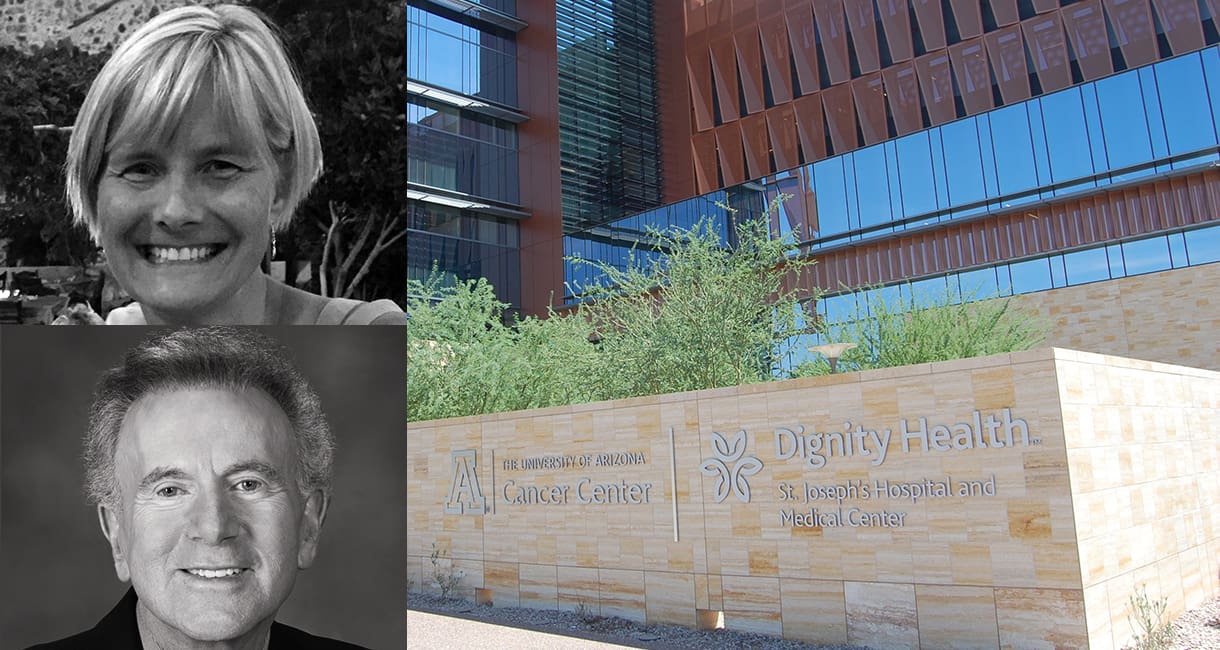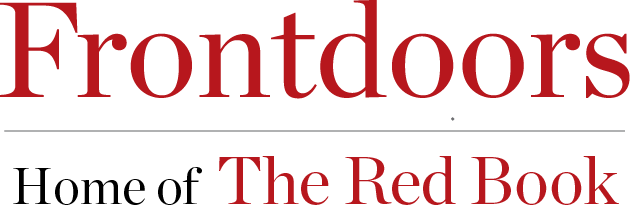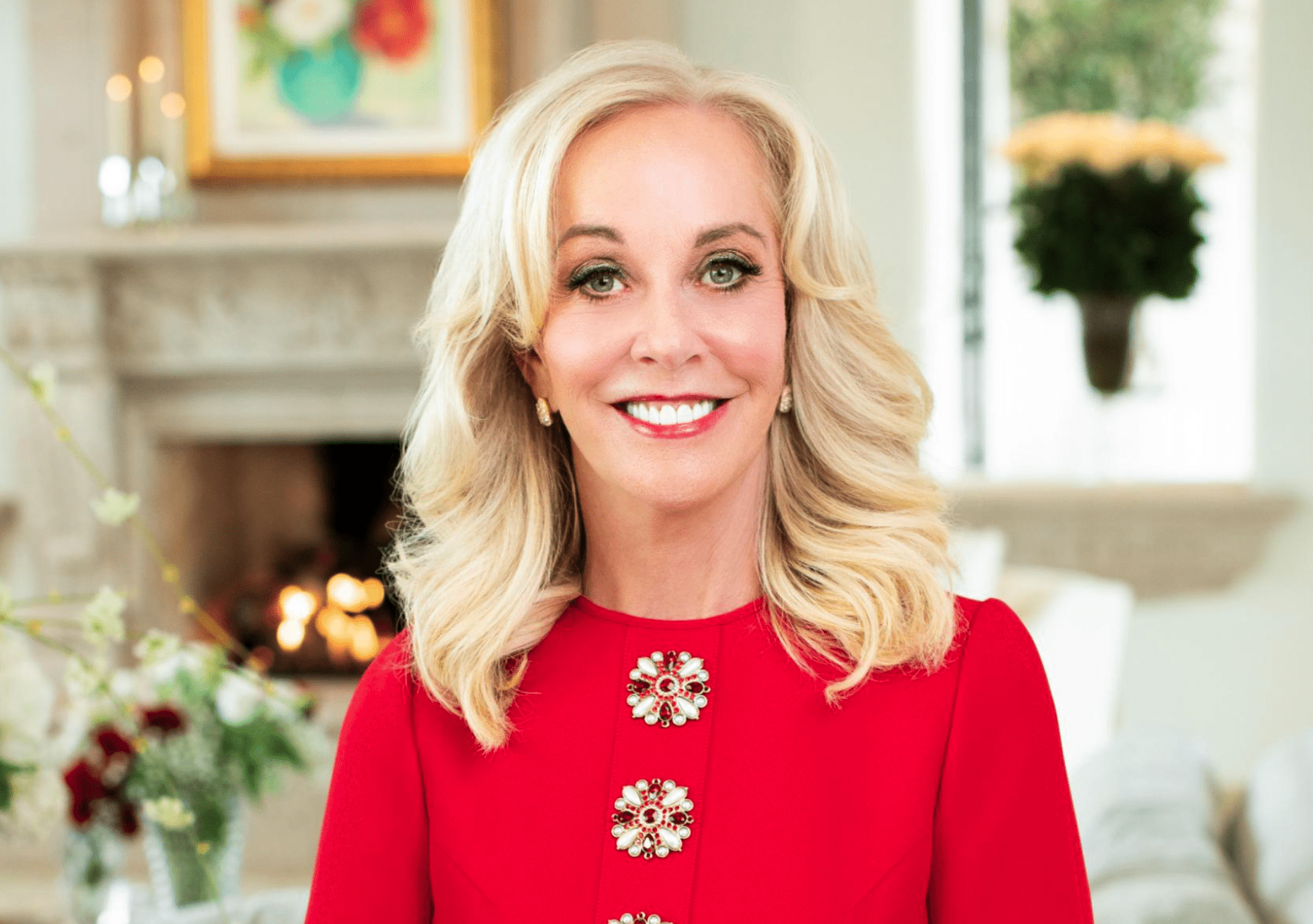New Face in the City, Faces of the Cancer Center

When the University of Arizona Cancer Center at Dignity Health St. Joseph’s Hospital and Medical Center opened in August 2015, the face of downtown Phoenix underwent another change, and the city became one step closer to becoming a “major magnet of clinical research and translation research.”
These are the words of Dr. David Alberts, whose storied career includes serving as the second director of the University of Arizona Cancer Center in Tucson, as the current Regents Professor of Medicine, Pharmacology, Nutritional Science and Public Health, and as the director emeritus of the Arizona Health Sciences Center.
Cancer research, in particular ovarian cancer research, has been Alberts’ passion for 40 years. Throughout his career, he has focused on translational cancer prevention and treatment research, which he explains as “using the research laboratory to understand how an intervention works, applying new technologies to a clinical problem.”
Since 1990, Alberts has been principal investigator for research projects at the University of Arizona Cancer Center exceeding more than $168 million in National Cancer Institute funding. He has pioneered new treatments for ovarian cancers, and investigated precursor lesions for bladder, breast, colon, cervical, endometrial, ovarian, prostate and skin cancers. NCI-funded research under Alberts’ leadership has resulted in 18 patents.
He was also instrumental in bringing the University of Arizona Cancer Center to Phoenix.
WHY PHOENIX?
“Having a presence in Phoenix was my vision. Starting in 1987, we established a clinical research facility in Sun City; in 1990, one in Mesa; then one in Central Phoenix (at Indian School Road and Third Street); the fourth was in Scottsdale,” Alberts explains.
“The purpose of those was to provide clinical research projects for the people of Phoenix to be involved in. We were very focused on skin, breast and colon cancer prevention.”
Out of these grew a relationship with Scottsdale Healthcare, where Alberts developed a cancer prevention program at the Shea campus as well as an early phase trial program.
Alberts cites two compelling reasons to develop the UA Cancer Center in Phoenix. One is the Phoenix Biomedical Campus. With the UA College of Medicine in Phoenix located on the campus, there is a great opportunity for research and to develop a clinical program to serve the central Phoenix population. TGen also is located on the campus and just south of the new Cancer Center, construction is underway on the 245,000-square-foot Biosciences Partnership Building.
“We’re on this campus to take advantage of the translational research in the new building that’s being built across the street and at TGen as well. The students will be able to come to this building to do their clinical training. Over time, this will develop into a major medical center,” Alberts says.
 Secondly, the University of Arizona Cancer Center is a National Cancer-Institute-designated Comprehensive Cancer Center, the only one in the state. As such, Alberts notes, “We have an absolute obligation as the comprehensive cancer center for Arizona to serve the entire state, not just Tucson.”
Secondly, the University of Arizona Cancer Center is a National Cancer-Institute-designated Comprehensive Cancer Center, the only one in the state. As such, Alberts notes, “We have an absolute obligation as the comprehensive cancer center for Arizona to serve the entire state, not just Tucson.”
What does that mean for the patient? “We have 11 multi-disciplinary clinical research teams in Tucson,” says Alberts. “Each team has medical oncologists, surgical oncologists, radiation oncologists and more, who specialize in the specific disease. That’s what we’re doing here as well. It’s hard to have a generalist do that. Right now in Tucson, we have about 150 clinical trials for treatment. The plan is to bring all of those, or those most likely to succeed, to Phoenix. We’re spending a tremendous effort to get all of that connected.
“The City of Phoenix and Dignity Health have been fabulous partners,” he says, noting that they leased the city block on which the cancer center was built at no charge for the first 10 years and for $50,000 for the next 50 years. St. Joseph’s Hospital provided generous funding to pay the debt service on the loan, the equipment for the building and also a large number of new faculty positions to push ahead.
FACES OF THE UNIVERSITY OF ARIZONA CANCER CENTER
The faces of the University of Arizona Cancer Center at Dignity Health St. Joseph’s Hospital and Medical Center are many. Alberts’s certainly is one.
So are the faces of oncology experts from multiple disciplines, the nutritionists, the complimentary valets who greet guests, the friendly people at the front desk and those who serve at the recently completed cafe.
But perhaps the faces who speak most powerfully for the Center are those of the patients. They reflect hope, resolve, purpose and gratitude.
Pat Mersiowsky’s is among these faces.
On Jan. 7, 2010, Mersiowsky was diagnosed with breast cancer. She was 40. She already had undergone two lumpectomies for benign tumors, the first when she was 25; the second at age 39.
Just six months after that second lumpectomy, on a shopping excursion with her sisters the day after Christmas, she found another lump. In the Nordstrom dressing room, one of her sisters, who is an OB/GYN and had felt the previous lumps, felt this one. It was different. By Jan. 7, when Mersiowsky saw her physician, the one suspicious lump had become eight or nine.
Within three days of this lumpectomy, which revealed she had Stage IIIB breast cancer, her surgeon scheduled her for a bilateral mastectomy. But her father, an emergency room physician; her mother, who was a nurse; and her sisters felt they should do some research before she underwent surgery. They visited multiple doctors and surgeons.
Her physician suggested she might be a candidate for a clinical trial at the University of Arizona Cancer Center in Tucson. As it turned out, she was. Before surgery for the mastectomy, she underwent 27 weeks of chemotherapy, alternating three weeks in the Valley with every fourth week in Tucson. She received the same drugs she would have received under the standard protocol, plus two additional, experimental drugs.
Receiving the chemotherapy prior to surgery, she explains, was to evaluate the effectiveness of the drugs on the cancer cells. While they didn’t eliminate the cancer, the tumors had shrunk, and her medical team felt that the mastectomy would take care of the rest.
“See these faces? Hit me with everything you have.”
Her experience at the Cancer Center gave her confidence and a plan of attack. She already had a purpose. Each time she visited the Cancer Center, she took with her a picture of her four children, at the time 4, 6, 8 and 10. She would show the photo to those treating her and say, “See these faces? Hit me with everything you have.”
As she looks back on her experience, she realizes she’s glad she didn’t know everything she would be going through. By the end of the treatments, she had tremendous neuropathy. She is still missing some toenails, and her fingerprints have somehow disappeared, seemingly never to return. But she hung in there. As a swimmer, she visualized every step in the process as a lap. She was just doing laps.
Today, she is a cheerleader for the Cancer Center. “If Dr. Alberts is the brain of the Center, I am the heart,” she says. “One of the benefits of being part of the study was being one more person working on that drug. Whether it worked or didn’t work, I was helping the next person down the road. That was one more layer of hope to help me get through things.”
Three years ago, Mersiowsky was introduced to the Phoenix Friends of Arizona Cancer Center, a Valley organization that raises money for research at the Cancer Center. She uses the platform to spread the word about the Cancer Center, in Tucson and now in Phoenix.
“Rather than seeing one physician with one brain, I had a team of doctors, a team of researchers, and they were looking at everything – side effects, MRIs, scans. This was all prior to surgery. What UA was doing then was tomorrow’s standard of care, today.”
AN EVENING WITH THE FRIENDS 2016
The Phoenix Friends of the Arizona Cancer Center will host its 30th Annual Evening With the Friends on March 5. Each year, the organization raises money to help three investigators finish their projects to hopefully receive NIH grants.
Through NIH grants, the money they raise has the potential to increase exponentially, and 100 percent of it stays in Arizona. This year, the money will support research being conducted at the University of Arizona Cancer Center at Dignity Health St. Joseph’s Hospital and Medical Center.
Over the 30 years, the Friends have raised nearly $5.5 million.









